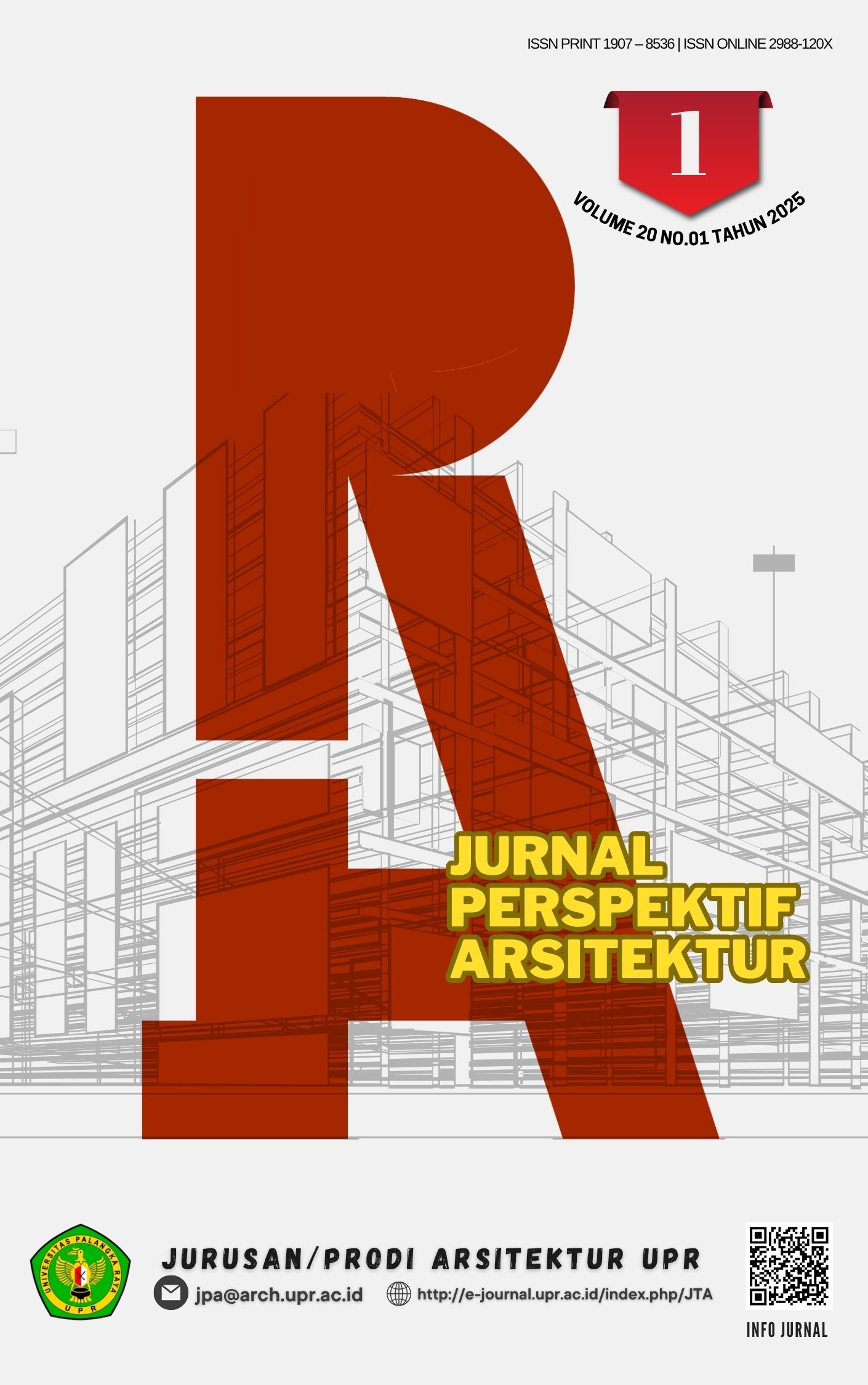KRITERIA PERANCANGAN GEDUNG DEPARTEMEN ARSITEKTUR UNIVERSITAS PALANGKA RAYA DENGAN PENDEKATAN DEKONSTRUKSI
DENGAN PENDEKATAN DEKONSTRUKSI
DOI:
https://doi.org/10.36873/jpa.v20i1.12336Keywords:
Departemen Arsitektur, Efesiensi, Dekonstruksi, Binary, UniversitasAbstract
Architecture is a major or field of science that is popular and continues to develop throughout its time. In its development, experienced architecture is needed to serve the needs of the community in construction and design. This is supported by the existence of educational facilities in the form of university architecture departments which have adequate accreditation to produce graduates who are able to compete and are competent in the world of architecture. This can also be supported by making designs with a deconstruction mindset that has a binary understanding or in the sense of the word rebelling against architectural rules, with designs that are able to provide spaces that can develop students' potential and can support in terms of comfort without having to reduce their essence as university/classroom buildings. The method that will be used is design and observation to support data and information both in terms of the architecture department and the deconstruction approach as one of the supports. Later, the architecture department building at Palangka Raya University will support students to be able to produce students who have creativity supported by comfortable buildings and open spaces supported by a deconstruction mindset.
Downloads
References
BAN-PT, “Data Universitas di BAN-PT.” https://www.banpt.or.id/direktori/prodi/pencarian_prodi.php (accessed Mar. 06, 2025).
C. S. Weinstein and T. G. David, “Spaces for children: The built environment and child development,” (No Title), 1987.
A. D. Dafrina, “Arsitektur Dekonstruksi sebagai Karakteristik Desain pada Bangunan Modern,” Arsitekno, vol. 5, no. 5, pp. 11–21, 2019.
A. M. Widjaja, V. G. Widyantoro, E. I. Larasati, L. N. Irianti, and R. A. C. A. Maharani, “Tanggung Gugat terhadap Pembebanan Hak Tanggungan atas Tanah Beserta Benda yang Akan Ada Berupa Gedung,” J. Mercat., vol. 13, no. 2, pp. 106–117, 2020.
J. Hoesada, Taksonomi Ilmu Manajemen. Penerbit Andi, 2013.
I. K. Adhimastra, “Arsitektur Dan Pendidikan Arsitektur,” J. Anala, vol. 2, no. 1, 2014.
A. Sutanto, “Peta Metode Desain,” Jakarta Univ. Tarumanagara, 2020.
R. Iswanto and H. Hartati, “Nilai filosofis bangunan perpustakaan ditinjau dari pemikiran arsitektur posmodern,” Tik Ilmeu J. Ilmu Perpust. dan Inf., vol. 2, no. 2, pp. 169–190, 2018.
Universitas Palangka Raya, “MASTER PLAN UPR,” 2023.

Downloads
Published
How to Cite
Issue
Section
License
Copyright (c) 2025 chaziel cherino eduard peyoh, Amiany, Yunitha

This work is licensed under a Creative Commons Attribution 4.0 International License.







